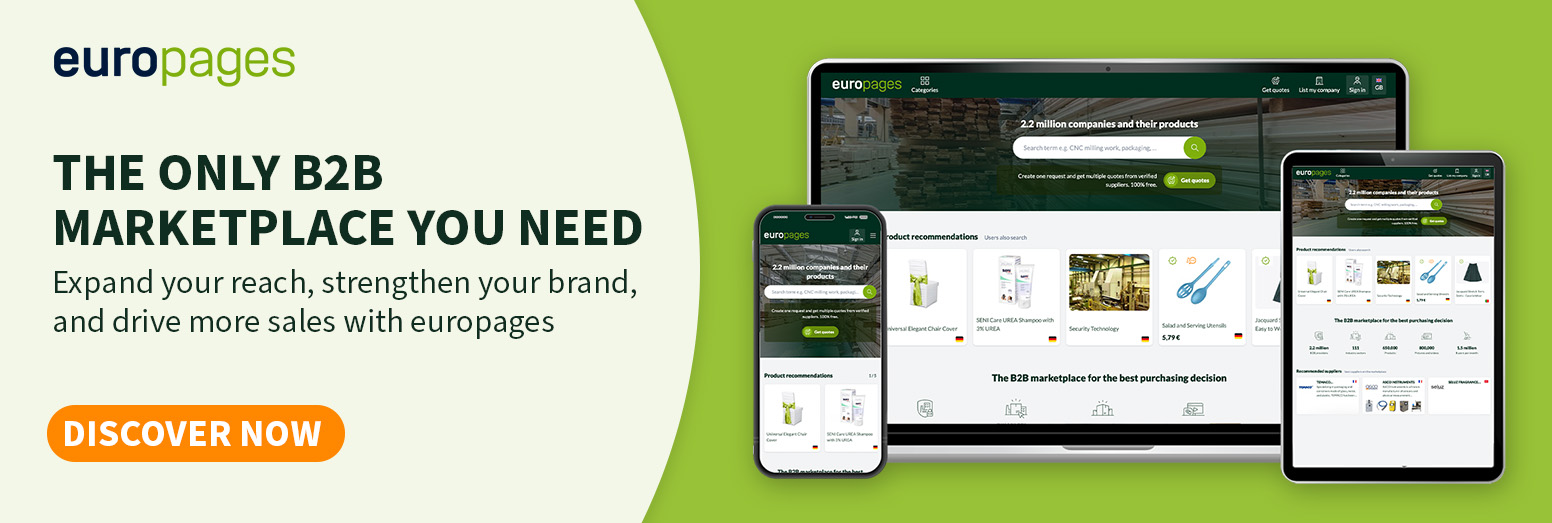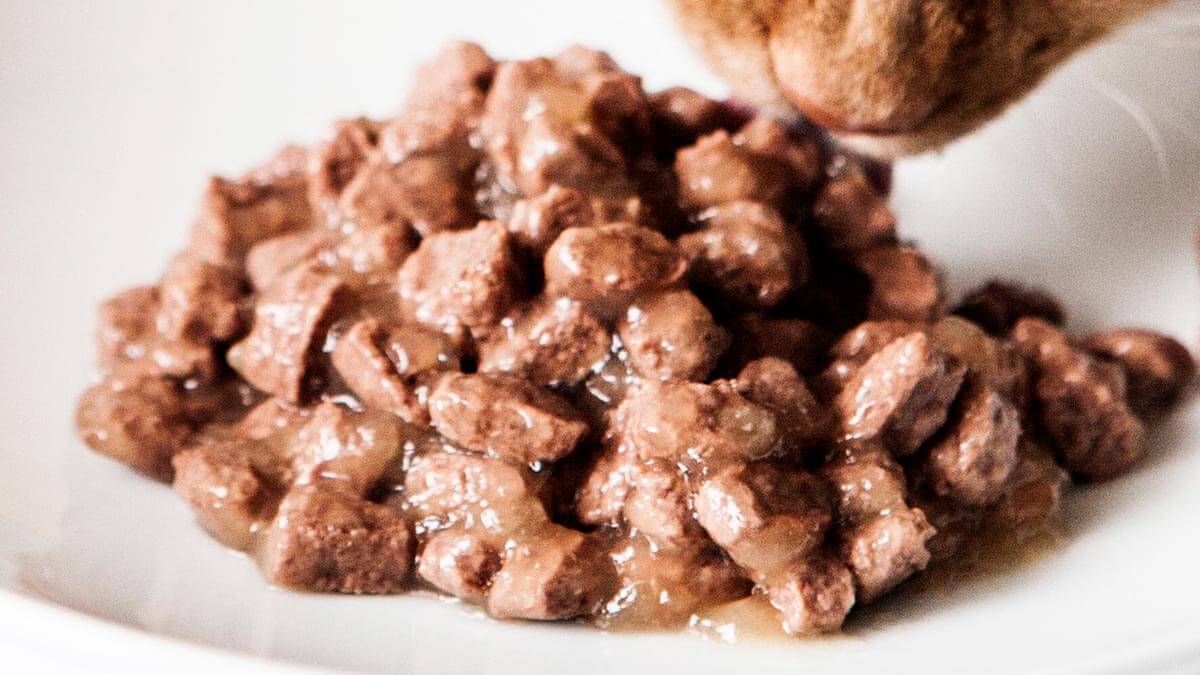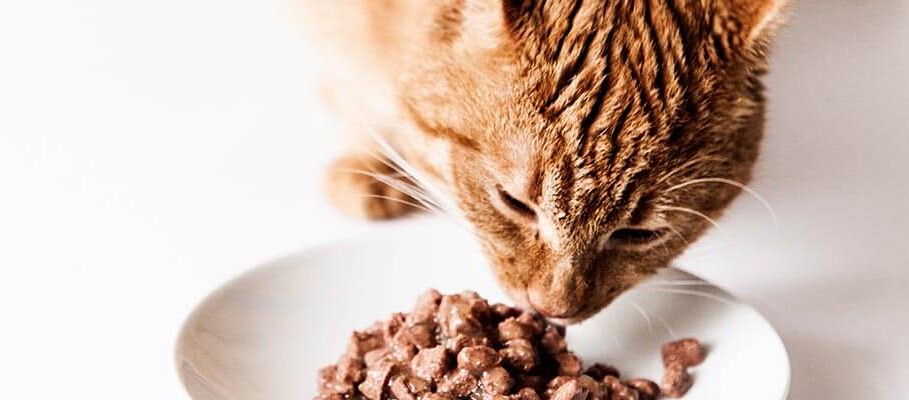Table of content
- The Rise of Sustainable Cat Food
- Insect-Based Protein: A Novel Solution
- Plant-Based Cat Food: Meeting Dietary Needs Sustainably
- Sustainable Sourcing: The Foundation of Eco-Friendly Cat Food
- Eco-Friendly Packaging: Reducing the Environmental Pawprint
- Safety and Hygiene in Sustainable Cat Food Production
- The Business Case for Sustainable Cat Food
- Pro Tip: B2B Collaboration for Sustainable Success
- Challenges and Opportunities in the Sustainable Cat Food Market
- Conclusion
The Rise of Sustainable Cat Food
The demand for sustainable products has permeated nearly every industry, and the pet food market is no exception. Consumers are increasingly aware of the environmental impact of their choices, including the food they feed their pets. This growing awareness presents both a challenge and an opportunity for businesses in the cat food industry. What factors are driving this shift? Primarily, it's the growing concern over the carbon footprint associated with traditional pet food production, particularly meat-based diets. Conventional meat production is resource-intensive, requiring significant amounts of land, water, and energy. Additionally, consumers are becoming more informed about the ethical implications of pet food sourcing and production.
For B2B professionals, this translates into a need to re-evaluate product lines, sourcing practices, and production methods. Businesses that proactively address these concerns are better positioned to attract environmentally conscious consumers and retailers. Moreover, embracing sustainability can lead to cost savings through resource optimization and waste reduction. It's not just about meeting consumer demand; it's about future-proofing your business in a world where sustainability is becoming a core value. Adapting to this trend will require to know more about the latest trends in dry food for cats and fresh food for cats.
Insect-Based Protein: A Novel Solution
One of the most innovative solutions emerging in the sustainable cat food market is the use of insect-based protein. Insects, such as crickets and black soldier fly larvae, offer a highly nutritious and environmentally friendly alternative to traditional protein sources like beef or chicken. What makes insect protein so sustainable? Insects require significantly less land, water, and feed to produce the same amount of protein compared to conventional livestock. They also emit fewer greenhouse gases and generate less waste.
For cats, insect protein is a natural food source, and many find it palatable. It's also rich in essential amino acids, fatty acids, and minerals, making it a complete and balanced protein option for food for cats. From a B2B perspective, incorporating insect-based protein into cat food formulations can offer several advantages. It positions your brand as innovative and forward-thinking, appealing to environmentally conscious consumers. It can also help diversify your supply chain and reduce reliance on volatile meat markets. While consumer acceptance of insect-based pet food is still growing, early adopters and environmentally aware pet owners are driving demand, creating a promising niche market for businesses willing to innovate.
The high-protein content of insect meal aligns well with the nutritional requirements of cats, providing essential amino acids and fats. Furthermore, the production of insect-based protein has a significantly lower environmental impact than traditional meat production. For example, producing one kilogram of insect protein requires approximately 2-3 kilograms of feed, compared to 10-12 kilograms of feed for beef protein.
Request a consultation to our team and discover how to effectively promote your cat food products on our platform.

Plant-Based Cat Food: Meeting Dietary Needs Sustainably
While cats are obligate carnivores, advancements in nutritional science have led to the development of nutritionally complete plant-based cat food options. These formulations use a blend of plant proteins, such as legumes, grains, and vegetables, to meet the dietary needs of cats. They are often supplemented with synthetic amino acids, like taurine, which are essential for feline health.
The primary advantage of plant-based cat food is its lower environmental impact compared to meat-based diets. Plant agriculture generally requires fewer resources and produces fewer emissions than livestock farming. For B2B professionals, offering plant-based options can cater to a growing segment of vegan and vegetarian pet owners who prefer to align their pets' diets with their own values.
However, it's crucial to ensure that any plant-based cat food formulation meets all the nutritional requirements of cats. Thorough testing and veterinary approval are essential to guarantee the health and well-being of cats consuming these diets. While plant-based diets can offer environmental benefits, they may not be suitable for all cats, particularly those with specific health conditions. Careful consideration and consultation with veterinarians are essential when formulating and marketing these products. It might not be the best option for your cat food for fussy cats formulas.
Sustainable Sourcing: The Foundation of Eco-Friendly Cat Food
Sustainable sourcing is a critical aspect of creating truly eco-friendly cat food. It involves selecting ingredients that are produced in an environmentally and socially responsible manner. For meat-based cat food, this might mean choosing suppliers that adhere to high animal welfare standards and employ sustainable farming practices. For plant-based ingredients, it involves sourcing from farms that use organic or regenerative agriculture methods, minimizing the use of pesticides and fertilizers.
Transparency and traceability are key components of sustainable sourcing. B2B professionals need to be able to trace their ingredients back to their origins and verify the sustainability claims of their suppliers. This often involves working closely with suppliers, conducting audits, and obtaining certifications like organic or fair trade.
Investing in sustainable sourcing not only reduces the environmental impact of cat food production but also enhances brand reputation and builds consumer trust. It demonstrates a commitment to ethical and responsible practices, which can be a powerful differentiator in a competitive market.
Eco-Friendly Packaging: Reducing the Environmental Pawprint
Packaging plays a significant role in the overall environmental impact of cat food. Traditional packaging, often made from non-recyclable plastics, contributes to plastic pollution and landfill waste. Eco-friendly packaging solutions aim to minimize this impact by using sustainable materials and designs.
Some common options include:
- Recyclable Packaging: Using materials like paperboard, aluminum, or recyclable plastics that can be easily recycled by consumers.
- Compostable Packaging: Utilizing materials that can break down naturally in composting facilities, reducing landfill waste.
- Biodegradable Packaging: Employing materials that decompose under specific conditions, though it's important to note that biodegradability can vary depending on the environment.
- Reusable Packaging: Implementing systems where packaging can be returned, refilled, and reused, such as through deposit return schemes.
For B2B professionals, adopting eco-friendly packaging can offer both environmental and business benefits. It reduces waste management costs, enhances brand image, and appeals to environmentally conscious consumers. Choosing the right packaging solution requires careful consideration of factors like product shelf life, transportation requirements, and local recycling infrastructure.

Safety and Hygiene in Sustainable Cat Food Production
Maintaining the highest standards of safety and hygiene is paramount in cat food production, especially when dealing with novel ingredients like insect protein or plant-based formulations. Strict protocols must be in place to prevent contamination and ensure product quality.
For example, when handling raw meat or other perishable ingredients, proper temperature control is crucial. Raw materials should be stored at temperatures below 4°C (39°F) to inhibit bacterial growth. Cross-contamination must be avoided by using separate equipment and utensils for raw and cooked ingredients.
Here are some crucial practices:
- Raw Material Handling: Implementing strict protocols for receiving, storing, and handling raw materials, including temperature monitoring and supplier verification.
- Cross-Contamination Prevention: Using separate processing lines and equipment for different ingredient types to prevent cross-contamination.
- Heat Treatment: Ensuring that all cat food products undergo appropriate heat treatment to eliminate harmful pathogens.
- Packaging Integrity: Maintaining the integrity of packaging to prevent contamination and ensure product freshness.
- Regular Testing: Conducting regular microbiological testing of both raw materials and finished products to verify safety and quality.
- Traceability: Implementing systems to trace ingredients and products throughout the supply chain, allowing for quick identification and resolution of any potential issues.
Adhering to these practices not only ensures the safety of cat food but also builds consumer trust and protects brand reputation. B2B professionals should prioritize safety and hygiene throughout their operations, from sourcing to production to packaging.
The Business Case for Sustainable Cat Food
Embracing sustainability in the cat food industry is not just an ethical choice; it's a sound business strategy. The market for sustainable pet food is growing rapidly, driven by increasing consumer demand for eco-friendly products.
Here's why it makes business sense:
- Market Growth: The global sustainable pet food market is projected to experience significant growth in the coming years. Businesses that position themselves early in this market can capture a significant share of this expanding segment. The dry food for cats market represents the most important segment in terms of volume.
- Brand Differentiation: Offering sustainable cat food options allows businesses to differentiate themselves from competitors and attract environmentally conscious consumers.
- Premium Pricing: Consumers are often willing to pay a premium for products that align with their values, creating opportunities for higher profit margins.
- Cost Savings: Sustainable practices, such as waste reduction and resource optimization, can lead to long-term cost savings.
- Regulatory Compliance: As environmental regulations become stricter, businesses that proactively adopt sustainable practices will be better prepared for future compliance requirements.
- Investor Appeal: Investors are increasingly considering environmental, social, and governance (ESG) factors when making investment decisions. A strong commitment to sustainability can enhance a company's appeal to investors.
By embracing sustainability, B2B professionals can position their businesses for long-term success in a rapidly evolving market.
Pro Tip: B2B Collaboration for Sustainable Success
Collaboration is key to driving meaningful change in the sustainable cat food industry. B2B professionals should actively seek opportunities to collaborate with other businesses, industry associations, research institutions, and NGOs.
Here's how collaboration can benefit your business:
- Knowledge Sharing: Sharing best practices, research findings, and technological innovations can accelerate the adoption of sustainable practices across the industry.
- Joint Ventures: Partnering with other businesses can help you pool resources, share risks, and develop new products or services more efficiently.
- Supply Chain Optimization: Working with suppliers and distributors to improve the sustainability of your supply chain can lead to greater efficiency and cost savings.
- Advocacy: Joining forces with other businesses to advocate for policies that support sustainable practices can create a more favorable regulatory environment.
- Consumer Education: Collaborating on consumer education campaigns can raise awareness about the importance of sustainable cat food and drive demand for eco-friendly products.
By working together, B2B professionals can create a more sustainable and resilient cat food industry.
Get tailored quotes from cat food suppliers that match your specific requirements. Start now by using our "Request for Quotes" page.

Challenges and Opportunities in the Sustainable Cat Food Market
While the sustainable cat food market presents significant opportunities, it also faces some challenges:
- Consumer Acceptance: Educating consumers about the benefits of novel ingredients like insect protein and overcoming any initial resistance to these alternatives will be crucial.
- Scalability: Scaling up the production of sustainable ingredients, such as insect protein, to meet growing demand will require significant investment and infrastructure development.
- Cost Competitiveness: Sustainable cat food options may initially be more expensive than conventional products. Achieving cost parity will be essential for mainstream adoption.
- Regulatory Framework: Clear and consistent regulations for novel ingredients and sustainable labeling are needed to ensure consumer safety and prevent greenwashing.
- Research and Development: Continued investment in research and development is necessary to improve the nutritional profiles, palatability, and affordability of sustainable cat food options.
Despite these challenges, the opportunities in the sustainable cat food market are substantial. Businesses that can innovate, collaborate, and effectively communicate the value of their sustainable products will be well-positioned to thrive in this growing market.
Conclusion
The shift towards sustainable cat food is more than just a trend; it's a fundamental change driven by consumer demand and a growing awareness of environmental issues. For B2B professionals in the cats and food for cats industry, embracing this shift is not only an ethical imperative but also a strategic necessity.
By exploring eco-friendly options like insect-based protein, plant-based alternatives, and sustainable sourcing and packaging, businesses can unlock new opportunities, enhance their brand image, and meet the evolving needs of today's environmentally conscious consumers.
The journey towards sustainability requires a commitment to innovation, collaboration, and continuous improvement. What steps will your business take to contribute to a more sustainable future for the cat food industry? The choices we make today will shape the industry for years to come.
For more information about pet food, feel free to read the paper from ScienceDirect.
Find Sustainable Cat Food solutions for your Project!
- BECKERCOMPLAN GMBH offers diverse, high-quality pet products, including various dry and wet foods for dogs and cats, horse feed, and supplements.
- NORMPATI PET FOOD produces high-quality, innovative, and reliable pet food, driven by ethical values and a commitment to animal health. Operating from a large facility in Izmir Torbalı, they export to over 50 countries, prioritizing customer satisfaction and responsible production.
- D STOCK AFFAIRES is a leading French wholesaler specializing in food product clearance and supporting charitable donations. They offer a wide range of products, including fruits, vegetables, beverages, and snacks, at competitive prices to all professional buyers through their online platform.
- MCPRO GIDA has been producing high-quality cat and dog food for over a decade, exporting carefully formulated recipes to Europe and around the globe.
- GÜLLÜK PET FOOD & PRODUCTS a major Turkish pet product exporter, offers high-quality cat, dog, and bird food, cat litter, and accessories. Established in 1997, their brands are globally recognized, thanks to their commitment to using the best raw materials.
- EFFEFFE PET FOOD TURKIYE has rapidly become a top Turkish animal food producer by capitalizing on emerging trends and its multifaceted experience. They leverage over 30 years of expertise to maintain European-standard production quality.
- VITALIZE SAINTHUBERT SAS BOYER a French company, offers a wide range of veterinarian-developed cat kibble, including grain-free options for sensitive pets. With 25 years of experience, their quality is trusted by pet professionals and owners alike.
- KARNAVAL AMBALAJ GIDA VE YEM SAN. TIC. LTD. ŞTI a leading brand since 2009, offers a wide range of high-quality pet food enhanced with scientifically backed formulas. Using advanced packaging technology ensures freshness and taste.
- PELAGOS AKVARYUM SAN. TIC. LTD. ŞTI. a major Turkish pet product exporter, offers high-quality cat food. Established in 1980, their cat food brand is globally recognized thanks to their access to premium raw materials.
- HOURAL'S FOOD provides high-quality animal nutrition solutions, including Economic, Grain-Free, Premium, and Super Premium options. They cater to breeders and other professionals, offering tailored ranges for puppies and kittens, and ensuring ingredient quality without compromise.
- SPECIALMIX MIGLIONICO S.R.L. utilizes both expert advice and personal experience to produce natural animal feed. Their extensive product line includes cat kibble made with carefully selected, locally sourced ingredients.
- ESPACE PASSION FRANCE is a super-premium French brand offering veterinarian-formulated kibble for cats. Known for its high-quality ingredients, palatability, and grain-free options, the brand is led by animal nutritionist Daniel Détraz and also offers a range of dietary supplements.

